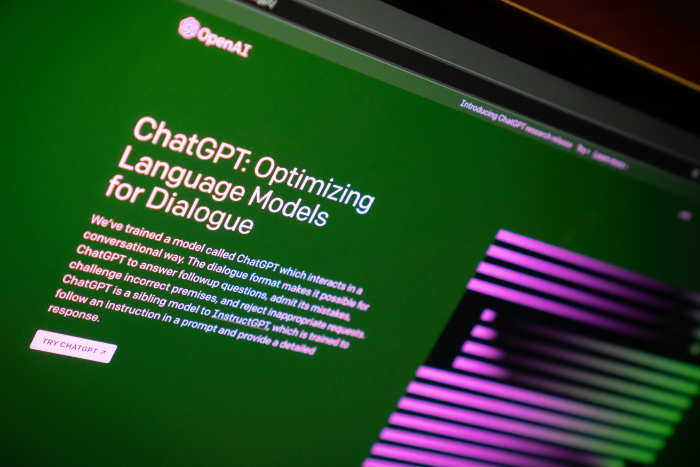This guide is designed to explain the mechanics behind ChatGPT responses. ChatGPT is based on the Transformer architecture, which has been a cornerstone in the field of natural language processing (NLP) since its introduction. The model is trained on a large corpus of text data and fine-tuned for specific tasks or to adhere to certain guidelines. The architecture consists of multiple layers of self-attention mechanisms and feed-forward neural networks. The model is autoregressive, meaning it generates text one token at a time, conditioned on the tokens it has generated so far along with the input query.
Assumptions Behind ChatGPT’s Response Generation
Proper Training and Fine-Tuning
Model Training and Fine-Tuning: One of the foundational assumptions is that the model has undergone rigorous training on a large, diverse dataset. This training equips the model with the ability to understand and generate human-like text. Beyond the initial training, it’s often assumed that the model has been fine-tuned for specific tasks or to adhere to certain guidelines. Fine-tuning refines the model’s capabilities, tailoring it to perform better in specialized scenarios or to comply with ethical or operational guidelines.
Query Formulation
Well-Formed and Understandable Query: Another critical assumption is that the query input by the user is well-formed and falls within the scope of the model’s training data. A well-formed query is grammatically correct, clear, and unambiguous, which allows the model to process it effectively. If the query contains jargon, slang, or concepts that the model has not been trained on, the quality of the generated response could be compromised.
Computational Resources
Sufficient Computational Resources: The process of generating a response involves complex calculations and requires a certain amount of computational power. It’s assumed that adequate computational resources, both in terms of processing power and memory, are available to support these operations. This ensures that the model can function in real-time or near-real-time, providing a seamless user experience.
Implications of Assumptions
Understanding these assumptions is crucial for both users and developers as they set the boundaries for what the model can and cannot do. For instance, if a model hasn’t been fine-tuned for a specific task, its responses in that domain may not meet the desired accuracy or relevance. Similarly, if a query is poorly formulated or if there are insufficient computational resources, the quality and speed of the response could be adversely affected.
By being aware of these assumptions, one can have a more nuanced understanding of the model’s capabilities and limitations, thereby setting realistic expectations for its performance.
Step-by-Step Mechanics
Tokenization Phase
- Input Preprocessing and Tokenization: When a user submits a query, the first action taken by the model is to break down this input into smaller, manageable pieces known as tokens. These tokens can be entire words, subwords, or even characters, depending on the language and context. This tokenization process is crucial because it translates the human-readable text into a format that the machine learning model can understand and manipulate.
Encoding Phase
- Query Encoding Through Encoder Layers: After tokenization, each token is passed through a series of encoder layers within the model. During this phase, every token is transformed into a high-dimensional vector. These vectors are not just numerical representations of the tokens; they encapsulate both semantic meaning and syntactic roles. This rich encoding allows the model to understand the context, nuances, and relationships between different parts of the query.
Decoding Phase
- Contextual Understanding via Decoder Layers: The vectors generated by the encoder serve as the contextual foundation for the decoder. The decoder layers are responsible for generating the response tokens sequentially, in an autoregressive manner. This means that each new token generated is conditioned not only on the preceding tokens in the output but also on the entire input query, as understood by the encoder.
- Incorporating Self-Attention Mechanisms: One of the most innovative aspects of the Transformer architecture is the self-attention mechanism. During the decoding phase, this mechanism allows the model to assign different weightage to various parts of the input query as well as to the tokens it has already generated. This weighted attention is instrumental in ensuring that the generated text maintains a coherent narrative and stays contextually relevant to the query.
- Token Generation and Vocabulary Probability Distribution: For each new token to be generated, the model computes a probability distribution over its entire vocabulary. While the token with the highest likelihood is often chosen to be the next in the sequence, there are advanced techniques like “beam search” and “nucleus sampling” that can be employed to introduce a level of randomness and creativity into the output.
- Iterative Token Generation: The decoder continues to generate new tokens, going through steps 3 to 5 in an iterative loop. This process continues until a predefined stopping criterion is met. This could be reaching a maximum number of tokens, encountering a specific end-of-sentence token, or some other condition.
Post-Processing Phase
- Detokenization and Text Reconstruction: Once the decoder has generated a complete set of tokens for the response, the next step is to convert these back into human-readable text. This process, known as detokenization, involves stitching the tokens back together while adhering to the grammatical and syntactic norms of the language.
- Final Output Delivery: Finally, the detokenized text is packaged into the format required for user interaction, and it is then sent back as the model’s comprehensive response to the initial user query.
Understanding the mechanics behind ChatGPT’s responses provides insights into its capabilities and limitations. While the model is powerful and versatile, it operates under certain constraints such as token limits and computational resources. Nonetheless, the intricate architecture and algorithms behind it make it a robust tool for a wide array of natural language understanding and generation tasks.
Image Credit: Jonathan Kemper
Filed Under: Guides
Latest aboutworldnews Deals
Disclosure: Some of our articles include affiliate links. If you buy something through one of these links, aboutworldnews may earn an affiliate commission. Learn about our Disclosure Policy.







